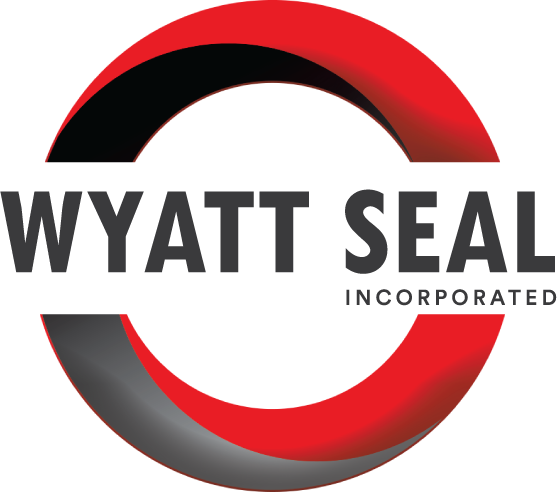Need some assistance?
- Overview
-
By Type
Custom - Standard (AS568)
-
By Brand
Parker - Freudenberg
-
By Material
Nitrile - FKM
- EPDM
- FFKM
- Silicone
- Fluorosilicone
- PTFE
- Polyurethane
- Teflon Encapsulated
- HNBR
- Overview
-
By Type
U-Cups - Wipers
- Wear Rings
Need some assistance?
Need some assistance?
-
O-RINGS
- Overview
-
By Type
Custom - Standard (AS568)
-
By Brand
Parker - Freudenberg
-
By Material
Nitrile - FKM
- EPDM
- FFKM
- Silicone
- Fluorosilicone
- PTFE
- Polyurethane
- Teflon Encapsulated
- HNBR
-
HYDRAULICS & PNEUMATICS
- Overview
-
By Type
U-Cups - Wipers
- Wear Rings
- ROTARY SEALS
- CUSTOM MOLDED
- GASKETS
- MACHINED RUBBER & PLASTICS
- EXTRUDED SHAPES & PROFILES
- SPECIALTY PRODUCTS
EPDM O-rings
Ethylene propylene diene monomer, commonly abbreviated as EPR or EPDM rubber, is a versatile and reliable elastomer widely used in sealing applications today. As a synthetic rubber, EPDM is known for its exceptional resistance to weathering, ozone, and UV exposure, making it ideal for outdoor environments and applications exposed to the elements.
With a durable, chemically stable structure, EPDM resists the effects of water, steam, and certain chemicals, particularly in low-temperature conditions. It can withstand moderate temperatures and provides flexibility across a range of environmental conditions. However, it is not recommended for use with oils, fuels, or solvents, as these can cause degradation.
Primarily used in industries like HVAC systems, automotive, and water treatment, EPDM O-rings offer durable, weather-resistant sealing solutions. For optimal performance, EPDM O-rings may require lubrication, typically with compatible non-petroleum-based greases or water-based solutions, depending on the application.
Features and Specifications
Temperature Range
Standard EPDM O-ring temperature ranges are typically from -65ºF to 300ºF. However, specialized formulations can expand this range to meet more extreme conditions. These temperature limits are based on dry air, but actual performance may vary depending on the specific application and environmental conditions.
When selecting EPDM O-rings, understanding the curing process is essential for determining temperature resilience. Peroxide-cured EPDM O-rings generally offer a higher temperature range than sulfur-cured options, withstanding up to 300°F or slightly higher, while sulfur-cured EPDM typically maxes out around 250°F. Peroxide curing also provides better stability at lower temperatures, making it more versatile across varying climates. Sulfur-cured EPDM, on the other hand, can be more cost-effective and may perform well in applications with moderate temperature requirements. The choice between peroxide and sulfur curing methods often depends on the specific heat resistance and longevity needed for the application.
Durometer
Standard durometer (hardness) for EPDM O-rings typically ranges from 40 Shore A to 90 Shore A, with 70 Shore A being the most common. This range provides flexibility, allowing EPDM to be customized for specific sealing applications by balancing hardness with elasticity.
Color
EPDM O-rings are most commonly black, but they can also be manufactured in other colors to suit specific application requirements.
Benefits of EPDM O-rings
EPDM O-rings provide outstanding resistance to weathering, ozone, and a variety of water-based chemicals, making them well-suited for demanding sealing applications in industries like HVAC systems, automotive, and water treatment. Known for their durability in outdoor and low-temperature environments, they deliver reliable sealing performance across moderate temperature ranges, ensuring long-lasting seals in challenging conditions. EPDM O-rings are highly versatile, offering an excellent balance of chemical resistance, weather resilience, and flexibility, making them a preferred choice for environments exposed to the elements. They offer several beneficial mechanical properties, including:
- Chemical resistance
- Flexibility
- Low compression set
- Low electrical conductivity
- Non-toxic / sterile
- Resistance to aging and sunlight
- Resistance to water and steam
- Temperature resistance
- Weather and ozone resistance
Additionally, EPDM O-rings are resistant to:
- Acids
- Brake fluids
- Cleaning agents
- Corrosion
- Diluted alkalis
- Ketones
- Mold
- Oxidation
- Steam
- Sunlight
- Water
- Weather
Common Uses and Applications
As one of the most widely used seals in the industry, EPDM O-rings are suitable for a variety of static and dynamic applications. They are easy to manufacture, even for specialized requirements, and provide reliable performance in demanding environments. EPDM O-rings are commonly utilized in water treatment, automotive, and HVAC applications, particularly in systems that require resistance to weathering, ozone, and steam. These O-rings are frequently found in sealing systems for pumps, valves, and industrial machinery. Additional industries that rely on EPDM O-rings include:
- Automotive
- Electrical
- Energy
- Food and beverage
- Household appliances
- Hydraulics
- Marine devices
- Medical and pharmaceutical devices
- Military applications
- Oil and gas
- Pneumatics
- Waterproofing
The wyatt seal advantage
We're here to help in selecting the right sealing solution. Tell us your specifications, and we'll partner with you to find the ideal O-rings for your next project. Contact Wyatt Seal to find out more about our O-ring selection and custom solutions.

